Nick Saban asks, and we deliver. These teams are obviously doing something right to land in the top 25, but it’s all about what they will do going forward. We’re looking to go 1-0 every week, men. What could prevent these teams from reaching their goals this season?
Here’s a look at the biggest question mark facing each Top 25 team.
No. 1 Alabama
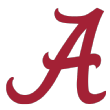
That Tua Tagovailoa really isn’t doing much in the fourth quarter. Just kidding. He doesn’t have to. If we’re looking for a weakness on this team — and it’s nitpicking, really — it’s special teams, where new punter Skyler DeLong has battled inconsistency and kicker Joseph Bulovas hasn’t quite proved himself yet. — Alex Scarborough
No. 2 Georgia
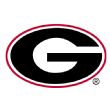
There’s a reason Kirby Smart was so upset after Saturday’s victory over Missouri. Sure, he appeared to be channeling his inner Saban with fury for fury’s sake. But it was more than that. His defense might have held Tigers quarterback Drew Lock to no touchdowns, but the run defense was less than stellar, allowing 172 yards and four touchdowns on the ground. That kind of effort won’t suffice in bigger games late in the season. — Scarborough
No. 3 Clemson

There are two big questions here. With Trevor Lawrence now the starting quarterback, what is Kelly Bryant‘s role on the team? Remember, Bryant was the difference-maker in the victory over Texas A&M and provides veteran leadership in the clutch. Also, the secondary gets its first big test since the Aggies game this weekend against Syracuse. That’s a unit that has to get better as the season goes on. — Andrea Adelson
No. 4 Ohio State

The Buckeyes’ defense makes a lot of big plays, but it gives them up as well. That group has surrendered 30 or more yards on a play 11 different times through Ohio State’s first four games of the season. The back half of a defense that was recently well stocked with high NFL draft picks has a bit of a learning curve to conquer. Ohio State’s offense is potent enough to render most of those broken plays moot, but against the toughest teams on the schedule (like, for instance, Penn State and its No. 1-ranked scoring offense this weekend) a few big gains could be the difference between an undefeated season and missing the College Football Playoff. — Dan Murphy
No. 5 LSU

The Tigers have yet to start the same five offensive linemen in a game so far this season. That’s not ideal for continuity, communication and consistency, all of which are important up front. They’ve been without right tackle Adrian Magee since the first quarter of their Week 1 win over Miami, left tackle Saahdiq Charles has been out the past two weeks and left guard Garrett Brumfield is now out indefinitely with an injury, coach Ed Orgeron said Monday. The depth is being tested. — Sam Khan Jr.
No. 6 Oklahoma

The Sooners have been a terrible tackling team the past two weeks. Iowa State was able to pop OU with big passing plays after the catch, while Army was successful grinding out long, time-consuming drives that kept Kyler Murray on the sideline. As good as it is, the offense can take the Sooners only so far. And OU is going to face far more potent offenses. If the tackling doesn’t rapidly improve, the Sooners will struggle to be a playoff team. — Jake Trotter
No. 7 Stanford

Here’s a shocker: Even with the return of running back Bryce Love, the Cardinal are averaging just 3.66 yards per carry. That’s the team’s lowest number in a decade. Obviously, there’s a lot of time to rectify that, and David Shaw’s track record indicates they’ll get it figured out, but it has been stunning to watch the Stanford offensive line fail to provide any sort of push. It should be noted, however, that opponents are stacking the box and doing everything they can to prevent Love from running wild. — Kyle Bonagura
No. 8 Notre Dame

Notre Dame’s passing game took a big leap toward convincing Saturday when head coach Brian Kelly turned the offense over to new quarterback Ian Book. Keep in mind, though, Book’s 325 passing yards came against one of the worst statistical passing defenses in the Power 5 and it doesn’t mean he’ll remain as consistent for the rest of the season. Notre Dame still needs to prove its wide receivers can show up on a weekly basis and that Book’s success will continue before the Irish should be trusted as an offense that can hurt teams with more than just the run. — Murphy
No. 9 Penn State
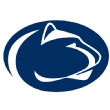
The Nittany Lions have shown well on offense despite not having offensive coordinator Joe Moorhead and All-America running back Saquon Barkley. The question of whether the offense can still be explosive without them has seemingly been answered. But the defense has still shown signs of its inexperience, most recently giving up 24 points to Illinois and earlier allowing 38 points against Appalachian State. The defense replaced most of the starters from last season and now has a huge test coming up with an Ohio State offense humming on all cylinders. — Tom VanHaaren
No. 10 Auburn
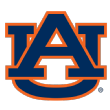
Gus Malzahn’s offense isn’t working like it’s supposed to. There’s no way around that right now. Not after failing down the stretch against LSU two weekends ago, and not after last weekend’s victory over Arkansas. Jarrett Stidham is a first-round-caliber quarterback making mid-round-caliber decisions right now, with just three touchdowns and two interceptions. And if the running game doesn’t get going — and as a result, free up Stidham — it’s going to be tough sledding for the entire offense this season. — Scarborough
No. 11 Washington

The Huskies’ offense and punting units haven’t been doing their defensive counterparts any favors. Washington ranks 97th nationally and 11th in the Pac-12 in opponents’ starting field position, meaning its opponents need to cover less ground to get into position to score. On average, opponents are starting at roughly their own 31-yard line. Last season, Washington ranked No. 7 nationally in the same statistic. — Bonagura
No. 12 West Virginia

The Mountaineers quietly lead the country in scoring defense, allowing only 12.3 points per game. The run defense has been particularly impressive, surrendering only 3.2 yards per carry. But will that translate when West Virginia faces the upper-echelon Big 12 teams? In the past, it hasn’t. But this defensive line, led by grad transfers Kenny Bigelow Jr. and Jabril Robinson, has a chance to hold up in the league in a way other West Virginia defensive lines haven’t. — Trotter
No. 13 UCF
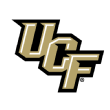
McKenzie Milton and the offense are doing quite fine. It is stopping the run that remains an area of concern. UCF ranks No. 119 in the nation in run defense, allowing 239 yards per game. While the Knights just faced FAU back Devin Singletary, who had a big role in the 320 yards the Owls gained, UCF has given up at least 170 yards rushing in all three games it has played so far. — Adelson
No. 14 Michigan
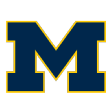
While the Wolverines’ offensive line fared well against Nebraska, there are still questions for the group up front. Nebraska’s defensive front is notably bad, and Michigan struggled in its three previous games. The line has shown some improvement but also signs of weakness when opponents rush more than four players or stunt the linemen. That has caused confusion along Michigan’s offensive line, and the unit will need to improve as the Wolverines get further into Big Ten play. — VanHaaren
No. 15 Wisconsin

Opposing quarterbacks have had a pretty comfortable go of it against the Badgers’ pass rush so far this season; Wisconsin has produced only three sacks in its first four games. The Badgers didn’t register a sack or a single quarterback hurry against Iowa’s Nate Stanley during last weekend’s narrow victory at Kinnick Stadium. They rank 95th nationally with an average of 5 tackles for loss per game. An inability to create disruptions in the backfield has hurt this young defense’s chances to create big momentum swings and force mistakes. That contributed to Wisconsin’s downfall against BYU two weeks ago and could cause more issues down the road. — Murphy
No. 16 Miami

The biggest remaining question mark is the same one the Hurricanes had going into the season: What happens at quarterback? With N’Kosi Perry playing so well against FIU last week, coach Mark Richt could be on the verge of turning the starting job over to him. Richt wouldn’t divulge his plans, but it seems fairly obvious now that Miami is looking beyond Malik Rosier. — Adelson
No. 17 Kentucky
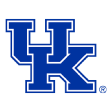
The Wildcats have demonstrated that they can run the ball and stop the run, which is always a winning combination, but what happens if they’re put in a situation where they have to throw the ball to win, particularly if they get behind in a game? Quarterback Terry Wilson is electric as a runner and is completing 67.1 percent of his passes. But he’s thrown only two touchdown passes and four interceptions. If a team is able to slow down the Wildcats’ running game and keep Wilson in the pocket, is their passing game potent enough and polished enough to get it done? — Chris Low
No. 18 Texas

Last season, Texas’ running game was basically comprised of QB Sam Ehlinger grinding out tough yardage. So far this season, little is different. The Longhorns are ninth in the Big 12, averaging 3.7 yards per carry. To contend in the league, they’re going to need a more consistent rushing attack. Whether that’s true freshman Keaontay Ingram emerging into the featured runner or the offensive line just blocking better, the Longhorns need more from their rushing attack to ease the pressure on Ehlinger. — Trotter
No. 19 Oregon

While the Ducks might have one of the nation’s best quarterbacks in Justin Herbert, they’re making opposing quarterbacks look pretty good, too. Oregon ranks No. 11 in the Pac-12 in passing yards allowed, passing touchdowns allowed and opponents QBR. In a heartbreaking loss to Stanford, Cardinal quarterback K.J. Costello completed 19 of 26 passes for 327 yards and three touchdowns as the passing game allowed Stanford to climb back into what appeared a sure Oregon victory for much of the game. — Bonagura
No. 20 BYU

It’s not hard to find a glaring, broad issue with a BYU team that has exceeded expectations to this point: The offense is dreadful. The Cougars are averaging just 4.83 yards per play (No. 113 nationally) and 320.3 yards per game (No. 117). Neither their rushing offense (No. 92) nor passing game (No. 114) is even close to the national average, and they rank No. 98 in points per game. — Bonagura
No. 21 Michigan State

The Spartans’ run game is almost nonexistent through three games. Michigan State ranks 112th in rush yards per game, averaging only 119.7 yards per game. The team has scored only four touchdowns on the ground. LJ Scott leads the Spartans with 103 yards and didn’t play in their most recent game against Indiana. Much of that problem is due to the offensive line, which has allowed eight sacks this season — only 10 sacks away from Michigan State’s 2017 total. — VanHaaren
No. 22 Duke

Duke has already lost seven starters to injury this season, although some are expected back. One of those is quarterback Daniel Jones, who broke his clavicle and has missed the past two games. The Blue Devils are hopeful of getting him back at some point, but the concern with this team remains depth. David Cutcliffe has done a terrific job of building depth, which was once nonexistent at Duke. But as the Blue Devils enter the teeth of their schedule, are they deep enough to weather some of these injuries? — Low
No. 23 Mississippi State
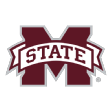
Things were going swimmingly until the Bulldogs got smacked by three touchdowns at Kentucky. That raised some issues: namely, the play of the offensive line. Clanga got beaten up front by the Wildcats, averaging just 2 yards per rush (56 yards on 28 carries) and as a result, the offense was stifled to the tune of just a touchdown. Kentucky’s defensive front is good, but so are many others in the SEC. The Bulldogs will have to rectify their line issues in a hurry. — Khan Jr.
No. 24 California

If it weren’t for their standout defense, the Golden Bears wouldn’t be sniffing the top 25. Their offense ranks No. 11 in the Pac-12 in yards per drive (28.7) and yards per play (5.01), they score on fewer than a third of their drives (29.3 percent) and are managing just 202.3 passing yards per game. — Bonagura
No. 25 Texas Tech

The secondary had a rough start to the season, getting torched by Ole Miss and Houston in the first three weeks. The 8.6 yards per pass attempt the Red Raiders are allowing to FBS competition is 102nd nationally. Things changed in their Week 4 victory over Oklahoma State (the return of preseason All-Big 12 safety Jah’Shawn Johnson from an injury was a big reason for that), so that’s encouraging. If Johnson can stay healthy, could this unit turn things around? — Khan Jr.
